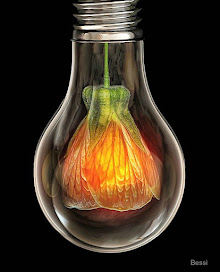I spent most of August dutifully visiting our local Korean market, hoping to see Mike's homemade kimchi in the refrigerated case by the cash register. Cathy, his wife, greets me with a smile; she knows why I'm there. "Good Timing! He's in the back, making kimchi right now. Do you want to see?" I had to pinch myself. First time food experiences have a way of leaving their mark on you, especially those that include a folkloric dish you didn't grow up with.
"You can try the kimchi, but it is ah-fresh and he likes to make it very ah-spicy." Mike's wife has a charming way of attaching the sound of "ah" to words, revealing her Korean accent when she is particularly enthusiastic about something. "I taught him how to make the kimchi and now he makes it better than me. He puts all kinds of things in there and makes it his way, not mine. I don't know what he does, but he makes it delicious!" Cathy throws her hands in the air and shakes her head as she laughs. It reminds me of how my mother teased my father about the mishmash dishes he would make out of leftovers (which were very good and usually surfaced after Thanksgiving or trips to the German butcher in the Bronx where he purchased European deli meats).
Cathy directs me to the food preparation room in the back of the store where Mike is mixing kimchi, his hands protected from the sear of chili by transparent gloves. In front of him is a bowl of rough cut Napa cabbage coated with a fiery red paste flecked with vegetal streaks of green. There are several bowls on the table including sliced daikon radishes, perilla leaves (usually reserved for wrapping finger food in Korean cuisine, but part of Mike's signature kimchi), chopped scallions and bottles of the culinary accoutrements that give kimchi its flavorful punch (fish sauce, hot pepper flakes, etc.). A discarded bag from H-Mart tells me that he doesn't mess around when it comes to ingredients; he goes to the source.
Mike encourages me to taste the different vegetables he uses in his kimchi, each of them coated in a garlicky dressing of his own concoction. Though everything is fiery there is a quality of peppery sweetness that reminds me of poivron rouge, a spice made from ground niora peppers grown in volcanic soil surrounding the Atlas Mountains near Marrakesh. I ask him where that lush pepper taste comes from and he reveals one of his secrets; he grinds fresh red peppers for his kimchi.
Mike has the same quality of enthusiasm for old country foodways that my father had. I repeatedly heard stories about salted cabbage magically transforming into sauerkraut via an alchemical vessel also known as "the wooden barrel," and how sauerkraut kept everyone in the family of five free from sickness during brutal Brzeziny winters in Poland. Like my father, Mike enjoys telling me how healthy his delicious concoction is. When I look at the shape of his hands covered in transparent gloves I see my father's hands, hands that know hard work and never complain, hands that hold the future of children who are too distracted with life to read the story of love and family in the dry lines and taut folds.
Mike has the same quality of enthusiasm for old country foodways that my father had. I repeatedly heard stories about salted cabbage magically transforming into sauerkraut via an alchemical vessel also known as "the wooden barrel," and how sauerkraut kept everyone in the family of five free from sickness during brutal Brzeziny winters in Poland. Like my father, Mike enjoys telling me how healthy his delicious concoction is. When I look at the shape of his hands covered in transparent gloves I see my father's hands, hands that know hard work and never complain, hands that hold the future of children who are too distracted with life to read the story of love and family in the dry lines and taut folds.
I leave the store with the heat of kimchi-to-be in my mouth and a smile that lasts all the way home. My lips tingle and the sensation is akin to being tickled by a thousand little feathers. Knowing this is like having a secret which makes me smile even more. I put the key in the apartment door and realize that thoughts which normally take up residence in my head had taken a much needed vacation, inspiring a state of kimchi Zen.
I return to the market on Wednesday, the day after New York experiences tremors from a 5.8 earthquake. Cathy tells me to wait until Saturday before I eat Mike's homemade kimchi as it will taste better if it has more time to ferment. I am patient for delicious. Three days later, per Cathy's instructions, I taste the kimchi. The howling winds of a downgraded Hurricane Irene go mute as I remember what it was like being in the kitchen when Mike was making kimchi. Its savor and tang inscribes my mouth with a flavorful memory that will never let me forget.
 Notes:
Notes:
Kimchi is a fermented cabbage dish served alongside savory meals in Korea. There are over 150 different kinds of kimchi made in Korea, which also boasts a Kimchi Museum. It is said that a Korean wife that doesn't know how to make kimchi will have little luck finding a husband.
After getting a copy of my father's papers from Auschwitz I was able to locate the address of the house where he lived in Brzeziny (which was located 20 kilometers east of Łódź, in Poland). Łódź-Park Piłsudskiego-gb-17 is now a park. It has been photographed by MiloTaurus1 on Panoramio. According to my father there was a small barn attached to the property. That is where the sauerkraut barrels were kept.
HMart, a Korean supermarket, is opening in Westchester. It will be located at 371 North Central Avenue in Hartsdale.
Mike and Cathy Jung own Hastings Prime Meats. It is located on 537 Warburton Avenue in Hastings on Hudson, New York. If you're lucky, they're will be some kimchi in the refrigerated food case when you are in the neighborhood.
Photograph of Mike Jung taken by Michelle Krell Kydd. Other photos in this post are licensed via Creative Commons. The picture of a sauerkraut barrel was taken by Aaron Tyo-Dickerson.
I return to the market on Wednesday, the day after New York experiences tremors from a 5.8 earthquake. Cathy tells me to wait until Saturday before I eat Mike's homemade kimchi as it will taste better if it has more time to ferment. I am patient for delicious. Three days later, per Cathy's instructions, I taste the kimchi. The howling winds of a downgraded Hurricane Irene go mute as I remember what it was like being in the kitchen when Mike was making kimchi. Its savor and tang inscribes my mouth with a flavorful memory that will never let me forget.
 Notes:
Notes:Kimchi is a fermented cabbage dish served alongside savory meals in Korea. There are over 150 different kinds of kimchi made in Korea, which also boasts a Kimchi Museum. It is said that a Korean wife that doesn't know how to make kimchi will have little luck finding a husband.
After getting a copy of my father's papers from Auschwitz I was able to locate the address of the house where he lived in Brzeziny (which was located 20 kilometers east of Łódź, in Poland). Łódź-Park Piłsudskiego-gb-17 is now a park. It has been photographed by MiloTaurus1 on Panoramio. According to my father there was a small barn attached to the property. That is where the sauerkraut barrels were kept.
HMart, a Korean supermarket, is opening in Westchester. It will be located at 371 North Central Avenue in Hartsdale.
Mike and Cathy Jung own Hastings Prime Meats. It is located on 537 Warburton Avenue in Hastings on Hudson, New York. If you're lucky, they're will be some kimchi in the refrigerated food case when you are in the neighborhood.
Photograph of Mike Jung taken by Michelle Krell Kydd. Other photos in this post are licensed via Creative Commons. The picture of a sauerkraut barrel was taken by Aaron Tyo-Dickerson.








